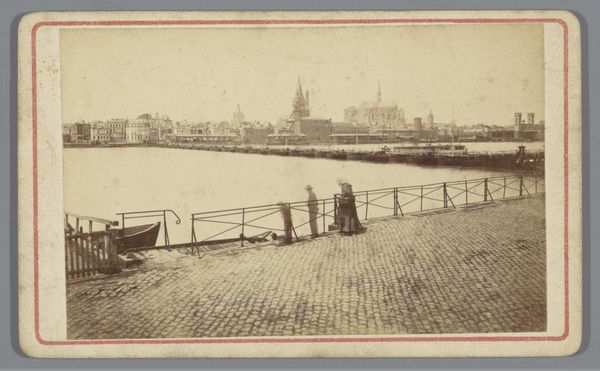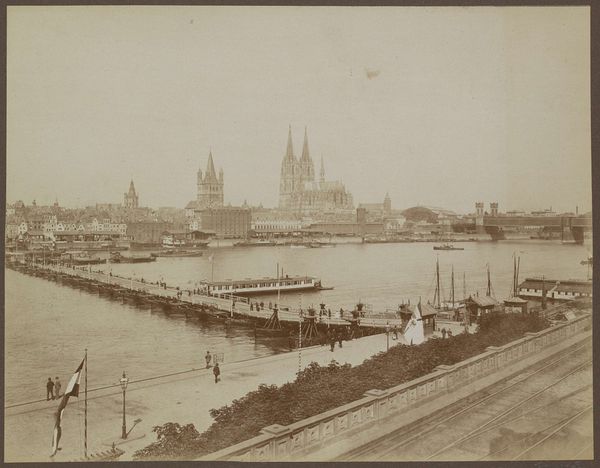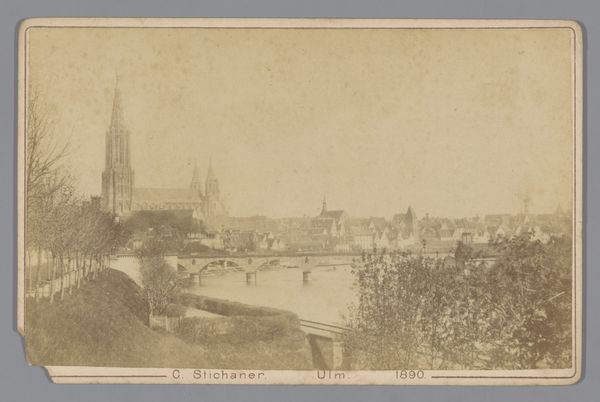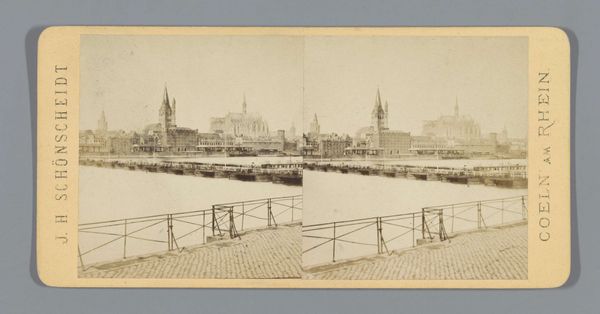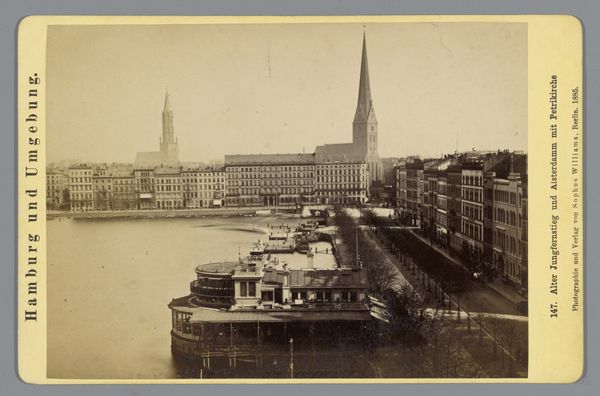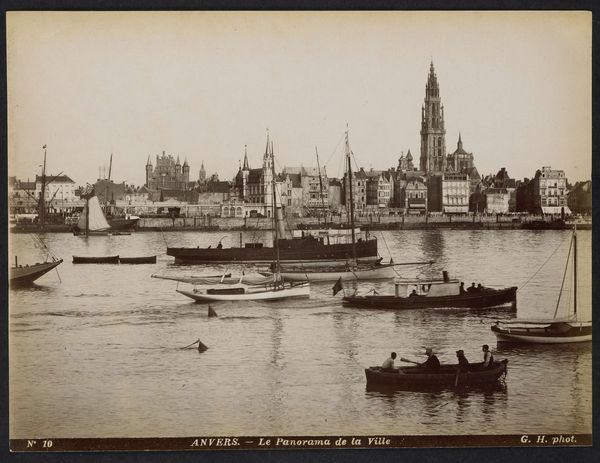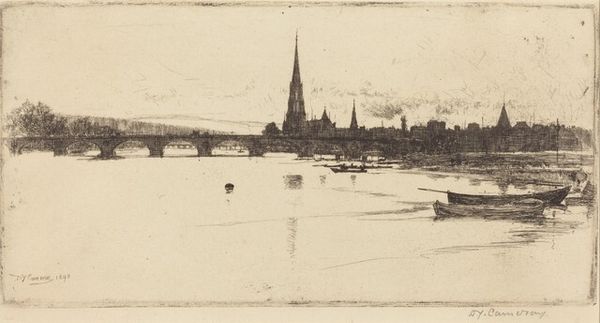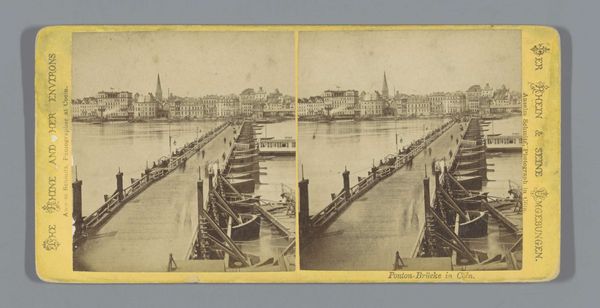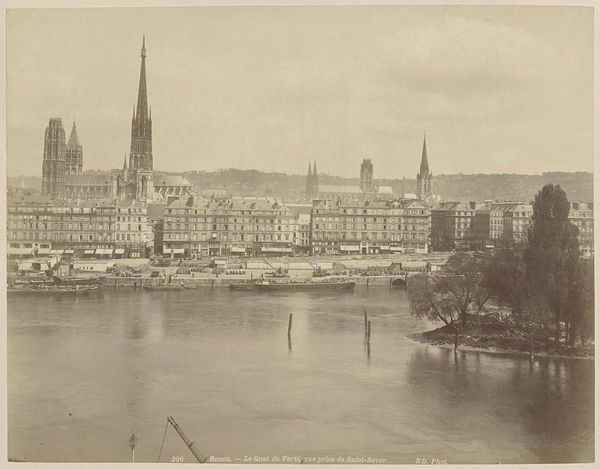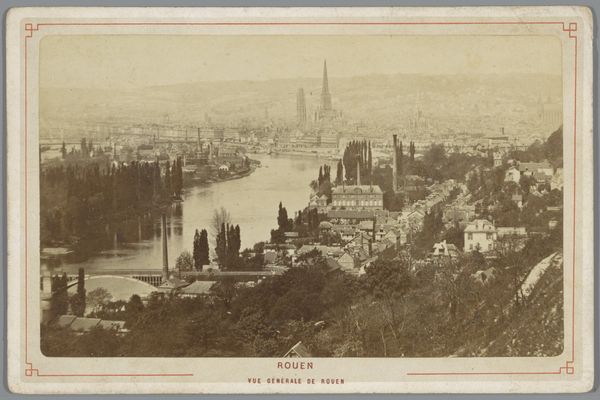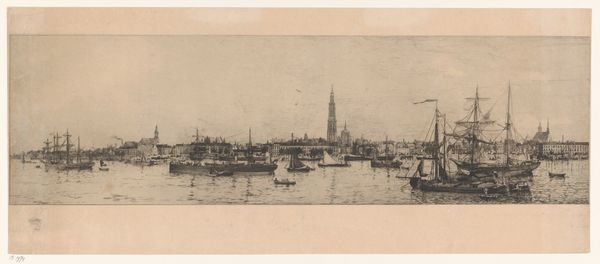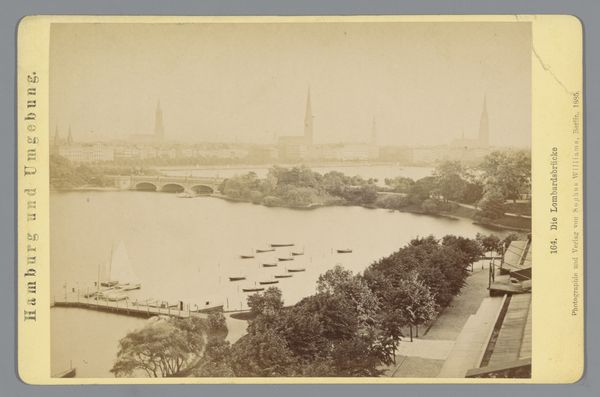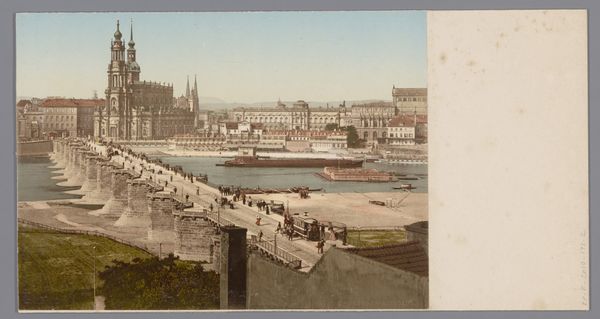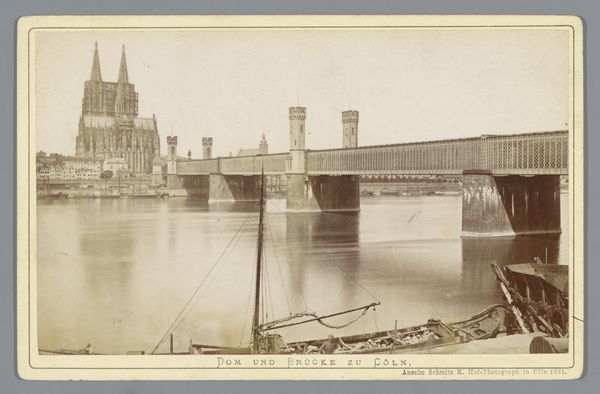
photography, gelatin-silver-print
#
pictorialism
#
landscape
#
photography
#
gelatin-silver-print
#
cityscape
Dimensions: height 108 mm, width 168 mm
Copyright: Rijks Museum: Open Domain
This photograph of Cologne was taken by Anselm Schmitz. He was among the earliest photographers to document the urban landscape and the daily life of the city. Photography in the 19th century required a deep knowledge of chemistry, optics, and mechanics, combining scientific processes with an artistic eye. The sepia tone is characteristic of early photographic prints, created through chemical development processes that render the image in varying shades of brown. This process was labour intensive, demanding careful preparation and handling of materials. What's fascinating here is the way photography, a new medium born of industrial and scientific advances, captures a city undergoing its own transformation. Cologne Cathedral, dominates the skyline, a testament to centuries of craftsmanship. Yet, look closely, and you’ll notice the bridge, the boats, and the bustling activity along the river. These elements reflect the growing importance of trade, transport, and labor that defined the era. Considering the material processes behind this photograph allows us to appreciate the intersection of art, industry, and society in the 19th century.
Comments
No comments
Be the first to comment and join the conversation on the ultimate creative platform.
